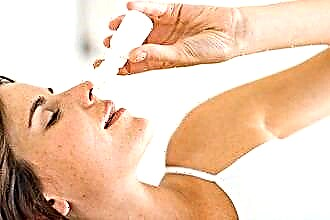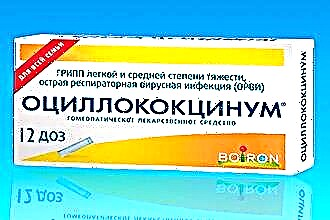Patients may describe the sensation of discomfort in the ear in different ways. In some cases, there are complaints of lumbago, crunching, clicking. In this case, the defeat can be symmetrical or present only on one side. These symptoms can be caused by both ear disease and processes associated with damage to other organs and systems.
 The sensation of pulsating and pounding in the ear can also be present in various pathological conditions. Most often, this symptom is observed when
The sensation of pulsating and pounding in the ear can also be present in various pathological conditions. Most often, this symptom is observed when
- cardiovascular disease;
- inflammatory processes of the ear;
- injuries;
- tumor processes.
Vascular pathology
Among cardiovascular pathology, most often the development of this symptom is accompanied by diseases characterized by atherosclerotic vascular lesions. As a result of metabolic disorders, their narrowing occurs. This leads to the fact that during the movement of blood, certain sound sensations arise. With the defeat of the small vessels of the inner ear, patients complain that something is pulsating in the ear. A similar mechanism of sound formation is characteristic of an increase in blood pressure of any genesis:
- hypertension;
- ischemic heart disease;
- kidney pathology;
- endocrine diseases.
Atherosclerotic vascular lesions are characterized by a certain symptom: the pulse in the ears does not correspond to the rhythm on the radial artery. With other disorders of the cardiovascular system, this correspondence is usually observed. Noise and pulsation in the ears can also be caused by various vascular anomalies. Those with vasoconstriction, as well as defects in the vascular wall, contribute to the occurrence of turbulent blood flow, which is accompanied by the development of this symptom.
Inflammatory processes
Pulsating ear pain is most often a sign of inflammatory processes such as otitis media and inner ear, eustachitis.
The presence of such a symptom is due to the accumulation of exudate in the auditory tube or middle ear. The fluid exerts pressure on the walls of these formations, contributing to the development of pain. With the development of this pathology, there are additional signs such as a feeling of pressure in the ears, a feeling of splashing liquid, hearing loss from the affected side. The inflammatory process is often characterized by a one-sided lesion.
The presence of sulfur plug also contributes to the amplification and distortion of the sound signal. The ingress of water into the external auditory canal leads to its soaking and increased discomfort, which can also interpreted by patients as a pulsation in the ear. At the same time, the general condition of the patient remains unchanged, which allows differentiation with inflammatory diseases of the ear.
interpreted by patients as a pulsation in the ear. At the same time, the general condition of the patient remains unchanged, which allows differentiation with inflammatory diseases of the ear.
With the development of otitis media of the inner ear, it becomes difficult to transform the sound signal into an electrical one. Disruption of this function of the inner ear is accompanied by a distortion of sound sensations. The patient may feel a pulsating pulse in the left ear or right.
Labyrinthitis is a severe pathology complicating the course of otitis media, meningitis. In addition to impaired sound perception, the vestibular apparatus suffers. Patients have a lack of coordination, which can be manifested by unsteadiness of gait, dizziness. In severe cases, patients complain about the rotation of objects around themselves and their own body in a certain direction.
Imbalance can be manifested by instability in a horizontal position, in severe cases, the inability to move is noted, the patient falls. Severe purulent course of labyrinthitis, accompanied by massive death of auditory receptors, leads to persistent hearing loss.
The development of this clinical picture makes it possible to confidently determine the nature of the pathological condition. In this case, an otolaryngologist, neuropathologist, infectious disease specialist can be involved to clarify the diagnosis and develop therapeutic tactics. Therapeutic measures include both conservative actions and surgical intervention.
Traumatic injury
Feelings in the form of pulsation can be noted due to a trauma to the skull or a similar lesion in one of the ear sections. In this case, the presence of a symptom is due to impaired blood circulation in the injured area, the development of edema in it. The most striking clinical picture is observed several hours after the injury.
An additional symptom may be headache, dizziness.
Increased pulsation is characteristic when turning and tilting the head.
Rest, resorption procedures that help restore blood circulation, lead to an improvement in the condition.
Tumors
If the throbbing pain behind the ear is due to a tumor process, then a slow increase in symptoms is characteristic. At first, the appearance of this symptom can be noted periodically, in conditions accompanied by an increase in pressure, fright, stress. As it grows, the tumor has more  a pronounced effect on nearby tissues and blood vessels. In the event that a vessel supplying the auditory nerve or the brain is compressed, it may be noted as pulsating in the right ear or left.
a pronounced effect on nearby tissues and blood vessels. In the event that a vessel supplying the auditory nerve or the brain is compressed, it may be noted as pulsating in the right ear or left.
This symptom can be due to both a benign tumor and oncopathology. In the presence of a malignant formation, symptoms such as malaise, weakness, weight loss, and the development of subfebrile condition are added to the sensation of pulsation in the ear. Clarification of the diagnosis is facilitated by hardware techniques, computed and magnetic resonance imaging, ultrasound of the vessels of the brain.
Another reason for pulsating in the ear is the use of ototoxic drugs. Gentamicin, kanamycin, which are part of many ear drops, with a perforated eardrum, have a direct effect on the bones of the middle ear and the structures of the inner ear. This side effect of these drugs can be accompanied by the development of distortion of sound sensations and hearing loss.
The hematogenous effect of dangerous drugs is also possible, when their toxic effect is due to the spread of antibiotics to the sound-conducting and sound-perceiving part of the ear with blood flow. Alcohol-containing ear drops, as well as topical agents containing salicylates, have a similar effect.
An important role in the diagnosis of this condition is played by additional signs, as well as instrumental and apparatus methods of examination, which make it possible to reliably clarify the cause of this symptom. The presence of pounding and pulsation in the ears for a long time negatively affects the quality of life of such patients, leading to irritability, insomnia.



